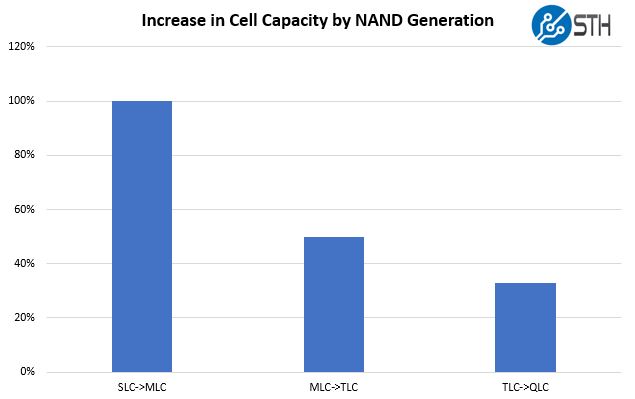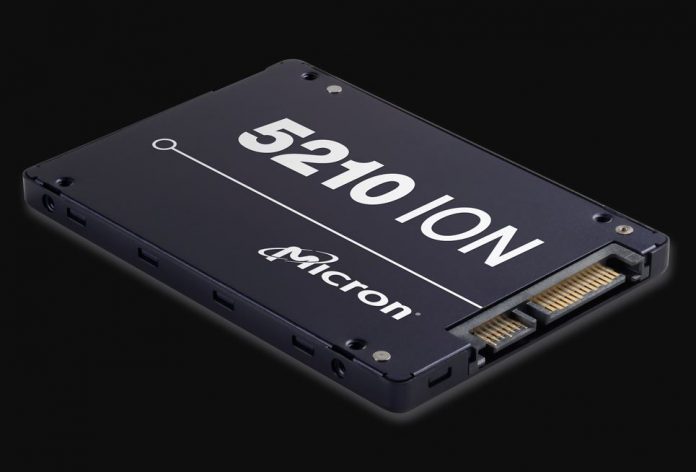There are two key ingredients to getting out of the current NAND shortage. We are seeing easing and part of that is due to the transition to TLC from MLC NAND. As the Intel DC P4510 benchmarks showed us, TLC NAND with proper caching and controllers can perform very well while having an acceptable level of endurance. Now Intel and Micron are announcing the jointly developed QLC NAND and its availability in the Micron 5210 ION SATA SSD.
Why QLC Matters
Currently, hyper-scale demands, combined with edge/ mobile computing devices have put a strain on the global supply chain for NAND capacity. This NAND capacity requirement will only grow as we see new devices such as autonomous cars hit our roads. One option for meeting that demand is building new fabs. Another option is making the current NAND fabs more efficient by increasing the amount of data stored on each NAND chip. QLC addresses the efficiency vector.

This chart illustrates that the generational gains from storing more bits per cell. Moving from SLC to MLC was a 100% gain in storage. MLC to TLC or 2 bits per cell to 3 bits per cell added another 50% in generational capacity. Now moving from 3 bits per cell to 4 bits per cell from TLC to QLC generations means that we are seeing another 33% increase in capacity. While we can look at this as “raw” capacity, some of the capacity gains are offset by additional reserved NAND for error correction so the tangible gains are significant, but in devices not exactly 33%.
Micron 5210 ION QLC NAND SSD
The Micron 5210 ION SSD is being announced. Micron says the SSD “is now shipping to strategic enablement partners and customers, with broad market availability expected in the fall of 2018.” So the availability for smaller channel partners, VARs, and ISVs is likely several months away. Still, the drives are interesting as they pack 1.92TB, 3.84TB, or 7.68TB into a 2.5″ 7mm form factor.
One can configure the Micron 5210 ION for higher endurance than its base rating of sub 1 DWPD using Micron’s Flex Capacity feature. Many workloads write once read many and as SSD capacities have moved from write caching tiers to general stroage, the reliance upon DWPD ratings has dwindled. If you have a workload that writes 400GB/ day, that is 2 DWPD on a 200GB SSD from years ago but only 0.2 DWPD on a modern 2TB drive.
The Micron 5210 ION SSD comes in a SATA interface only at this point. Micron said it plans to release QLC NAND to a broader set of interfaces, presumably NVMe, in the near future.
Here are the news releases from Intel and Micron.



